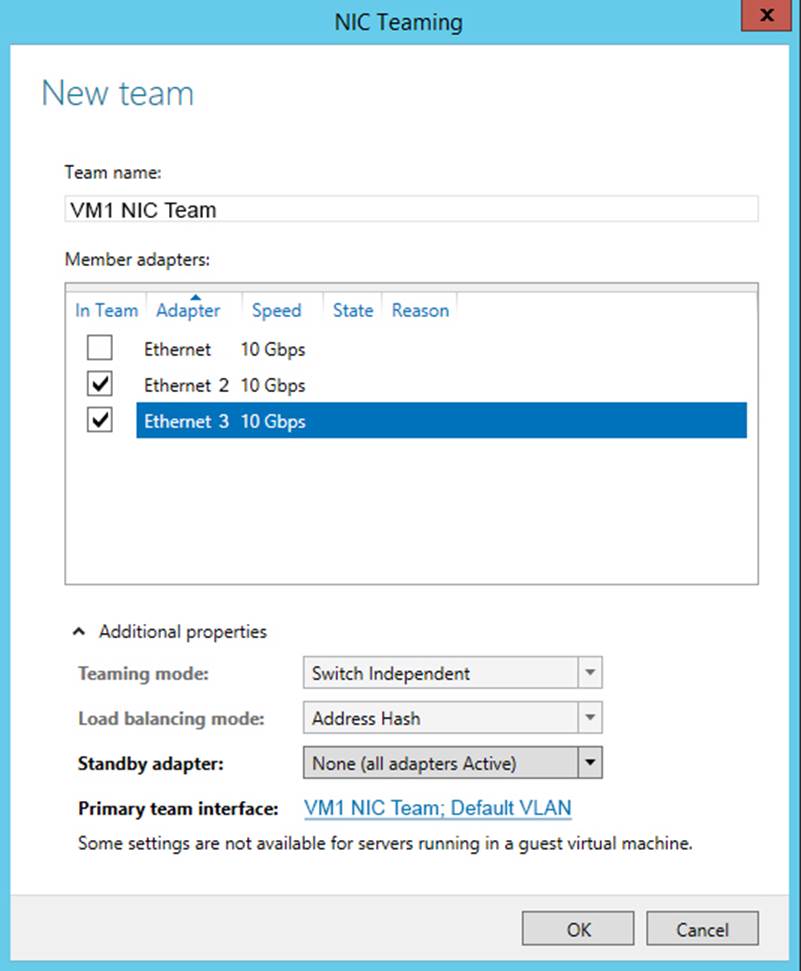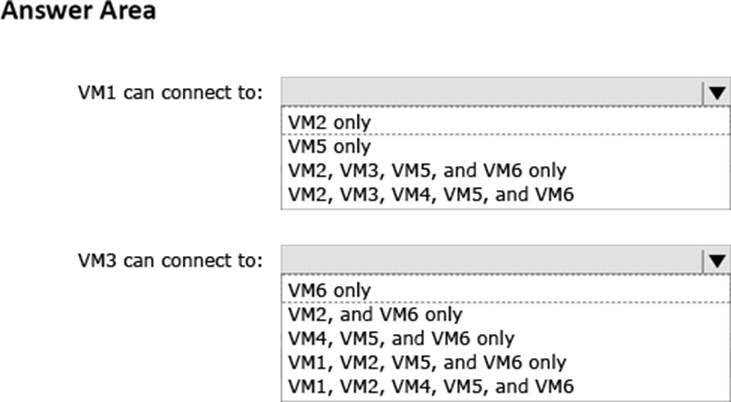Microsoft 70-743 Microsoft Upgrading Your Skills to MCSA: Windows Server 2016 Online Training
Microsoft 70-743 Online Training
The questions for 70-743 were last updated at Jan 02,2026.
- Exam Code: 70-743
- Exam Name: Microsoft Upgrading Your Skills to MCSA: Windows Server 2016
- Certification Provider: Microsoft
- Latest update: Jan 02,2026
You have a virtual machine named VM1 that runs Windows Server 2016. VM1 hosts a service that requires high network throughput.
VM1 has a virtual network adapter that connects to a Hyper-V switch named vSwitch1. vSwitch1 has one network adapter. The network adapter supports Remote Direct Memory Access (RMDA), the Single Root I/O Virtualization (SR-IOV) interface, Quality of Service (QoS), and Receive Side Scaling (RSS).
You need to ensure that the traffic from VM1 can be processed by multiple networking processors.
Which Windows PowerShell command should you run on the host of VM1?
- A . Set-NetAdapterRss
- B . Set-NetAdapterRdma
- C . Set-NetAdapterSriov
- D . Set-NetAdapterQoS
You have a server named Server1 that runs Windows Server 2016. Server1 is a Hyper-V host that hosts a virtual machine named VM1.
Server1 has three network adapter cards that are connected to virtual switches named vSwitch1, vSwitch2 and vSwitch3.
You configure NIC Teaming on VM1 as shown in the exhibit. (Click the Exhibit button.)

You need to ensure that VM1 will retain access to the network if a physical network adapter card fails on Server1.
What should you do?
- A . From Hyper-V Manager on Server1, modify the settings of VM1.
- B . From Windows PowerShell on VM1, run theSet-VmNetworkAdapterTeamMapping cmdlet.
- C . From Windows PowerShell on Server1, run the Set-VmNetworkAdapterFailoverConfiguration cmdlet.
- D . From Windows PowerShell on Server1, run the Set-VmSwitch cmdlet.
HOTSPOT
You have an Active Directory domain named Contoso.com. The domain contains Hyper-V hosts named Server1 and Server2 that run Windows Server 2016. The Hyper-V hosts are configured to use NVGRE for network virtualization.
You have six virtual machines that are connected to an external switch. The virtual machines are configured as shown.

To which virtual machine or virtual machines can VM1 and VM3 connect? To answer, select the appropriate options in the answer area.

You have a Nano Server named Nano1. You deploy several containers to Nano1 that use an image named Image1. You need to deploy a new container to Nano1 that uses Image1.
What should you run?
- A . the Install-WindowsFeature cmdlet
- B . the docker run command
- C . the docker load command
- D . the Install-NanoServerPackage cmdlet
You have a server named Server1 that runs Windows Server 2016.
You plan to deploy Internet Information Services (IIS) in a Windows container.
You need to prepare Server1 for the planned deployment.
Which three actions should you perform? Each correct answer presents part of the solution.
- A . Install the Container feature.
- B . Install Docker.
- C . Install the Base Container Images.
- D . Install the Web Server role.
- E . Install the Hyper-V server role.
You have a Hyper-V host named Server1 that runs Windows Server 2016.
Server1 has a virtual machine named VM1. VM1 is configured to run the Docker daemon.
On VM1, you have a container network that uses transparent mode.
You need to ensure that containers that run on VM1 can obtain IP addresses from DHCP.
What should you do?
- A . On VM1, run docker network connect.
- B . On Server1, run docker network connect.
- C . On VM1, run Get-VMNetworkAdapter CVMName VM1 | Set-VMNetworkAdapter CMacAddressSpoofing On.
- D . On Server1, run Get-VMNetworkAdapter CVMName VM1 | Set-VMNetworkAdapter C MacAddressSpoofing On.
You have a server named Server1 that runs Windows Server 2016. You install the Docker daemon on Server1.
You need to configure the Docker daemon to accept connections only on TCP port 64500.
What should you do?
- A . Edit the configuration.json file.
- B . Run the Set-ServiceWindows PowerShell cmdlet.
- C . Edit the daemon.json file.
- D . Modify the routing table on Server1.
You have a failover cluster named Cluster1.
A virtual machine named VM1 is a highly available virtual machine that runs on Cluster1. A custom application named App1 runs on VM1.
You need to configure monitoring on VM1. If App1 adds an error entry to the Application event log, VM1 should be automatically rebooted and moved to another cluster node.
Which tool should you use?
- A . Resource Monitor
- B . Failover Cluster Manager
- C . Server Manager
- D . Hyper-V Manager
You have a server named Server1 that runs Windows Server 2016.
The disk configuration for Server1 is shown in the exhibit. (Click the Exhibit button.)

You add Server1 to a cluster.
You need to ensure that you can use Disk 1 for Storage Spaces Direct.
What should you do first?
- A . Set Disk 1 to offline.
- B . Convert Partition (E:) to ReFS.
- C . Convert Disk 1 to a dynamic disk.
- D . Delete Partition (E:).
Your network contains an Active Directory domain. The domain contains two Hyper-V hosts.
You plan to perform live migrations between the hosts.
You need to ensure that the live migration traffic is authenticated by using Kerberos.
What should you do first?
- A . From Server Manager, install the Host Guardian Service server role on a domain controller.
- B . From Active Directory Users and Computers, add the computer accounts for both servers to the Cryptographic Operators group.
- C . From Active Directory Users and Computers, modify the Delegation properties of the computer accounts for both servers.
- D . From Server Manager, install the Host Guardian Service server role on both servers.
Latest 70-743 Dumps Valid Version with 252 Q&As
Latest And Valid Q&A | Instant Download | Once Fail, Full Refund


